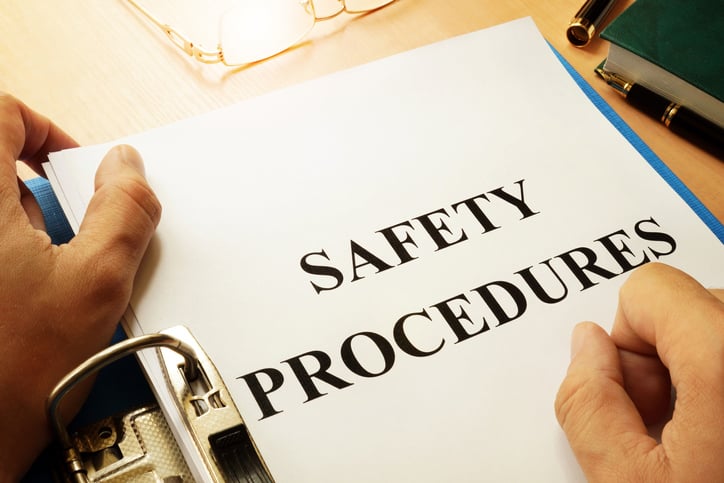Corporate offices are among the locations most susceptible to gun violence—and least prepared to respond effectively. In America, violent crime has steadily declined since the 1990s. But the workplace has proven to be an anomaly: Workplace shootings are on the rise. Today, the bulk of American active shooters attack places of business. And yet, very few businesses embrace substantive active shooter training and prevention.
According to the Bureau of Labor Statistics, workplace shootings are 30 times more common than building fires. But only about 20 percent of all businesses are fully prepared for an active shooter incident in their workplace.
Good active shooter training needs to consider three stages:
- PREVENTION
- RESPONSE
- RECOVERY
1 PREVENTION—Stop Attacks Before They Start
Most active shooter training underplays the value of prevention. Organizations—including businesses and corporate offices—overlook how effective prevention is at reducing the risk of active shooter incidents, and of lives lost to them. Improving building safety protocols and physical security gives your employees a huge defensive advantage (both physically and psychologically).
In researching workplace shootings since 2002, the FBI has identified disgruntled employees and business partners as the primary perpetrators. They further identified five key warning signs. A combination of these will usually precede an attack:
- Contextually inappropriate and recent acquisitions of multiple weapons
- Contextually inappropriate and recent increase in weapons training
- Contextually inappropriate and recent interest in explosives
- Contextually inappropriate fascination with previous shootings or mass attacks
- A significant real or perceived experience of personal loss (e.g., a death, breakup, divorce, or loss of a job)
The FBI stresses that all of these activities or incidents are perfectly normal—even constitutionally protected—by themselves.
What you need to watch for is when these come in combination and are contextually inappropriate. The FBI recommends that emergency planning at larger organizations include forming a threat assessment team (or TAT). This team includes members from throughout your organization, who communicate regularly so that warning signs aren’t each individually dismissed as “isolated incidents.”
2 RESPONSE—Surviving an Active Shooter Event
Active shooter events are chaotic, quickly evolving, and obey no hard-and-fast rules.
No one can give you a script in advance, or offer a “foolproof” survival strategy.
You need to prepare your workers in advance to feel empowered to make their own decisions in an emergency. Here’s a good strategy (based on a simplified version of the OODA Loop used by soldiers and law enforcement):
In any emergency, remember:
- observe—What do you see? What do you hear?
- orient—Don’t freeze. Take stock of what you observed. What is likely to happen next? What’s your course of action?
- react—Imagine that course of action. Take it.
- REPEAT!—Many individuals freeze after they’ve taken action. DO NOT FREEZE! Immediately return to observing the new situation; re-orient yourself and plan your next move. (This may be totally different from your last move.)
The FBI and DHS (Department of Homeland Security) now advocate a Run Hide Fight strategy as the best response to an active shooter. The City of Houston has an excellent set of Run Hide Fight resources you can draw from:
Most importantly, you and your employees must actually practice your active shooter response in advance. Like fire and tornado drills, active shooter drills serve to familiarize individuals with the right emergency mindset in advance. That way they will be ready to move calmly and confidently when it counts.
3 RECOVERY—Plan for How You Return to “Business as Usual”
First and foremost, you need a Public Crisis Communication Plan. Coordinate with law enforcement in advance. You need to be able to work with on-scene unified command communications personnel to assure accurate information reaches news media both during the event and in the immediate aftermath.
Additionally, you need a Survivor/Victim/Family Communication Plan. In all likelihood, it will not be possible to for individuals in your organization to immediately communicate with their families. This will be enormously stressful for families, and can complicate law enforcement response. Have a plan in place to keep timely, accurate, and relevant information flowing among family members, victims, and survivors.
Finally, in the hours, weeks, and months following an active shooter event, you’ll need to be ready to foster Psychological and Emotional Recovery among employees and their loved ones. Consider:
-
-
- Where will psychological counseling be provided?
- How will your leadership create a calm, supportive environment and share basic information about the incident?
- Who will identify persons who may need crisis counseling and provide a trained counselor?
- How will commemorations and memorial activities be handled? What will happen to notes/tributes? How will stakeholders be informed in advance?
- How will memorial activities strike a balance among honoring the loss, resuming routines and schedules, and maintaining hope for the future?
-
Being Prepared and Helping Others to Prepare
Workplace shootings are frightening and complex. As the FBI notes in Developing Emergency Operations Plans: A Guide for Businesses:
“No single response fits all active shooter situations; however, making sure each individual knows his or her options for response and can react decisively can save valuable time and lives. Depicting scenarios and considering response options in advance will assist individuals and groups in quickly selecting their best courses of action. This can be a sensitive topic and make some personnel uncomfortable. [But] … helping personnel build a survival mindset can increase the odds of surviving.“



